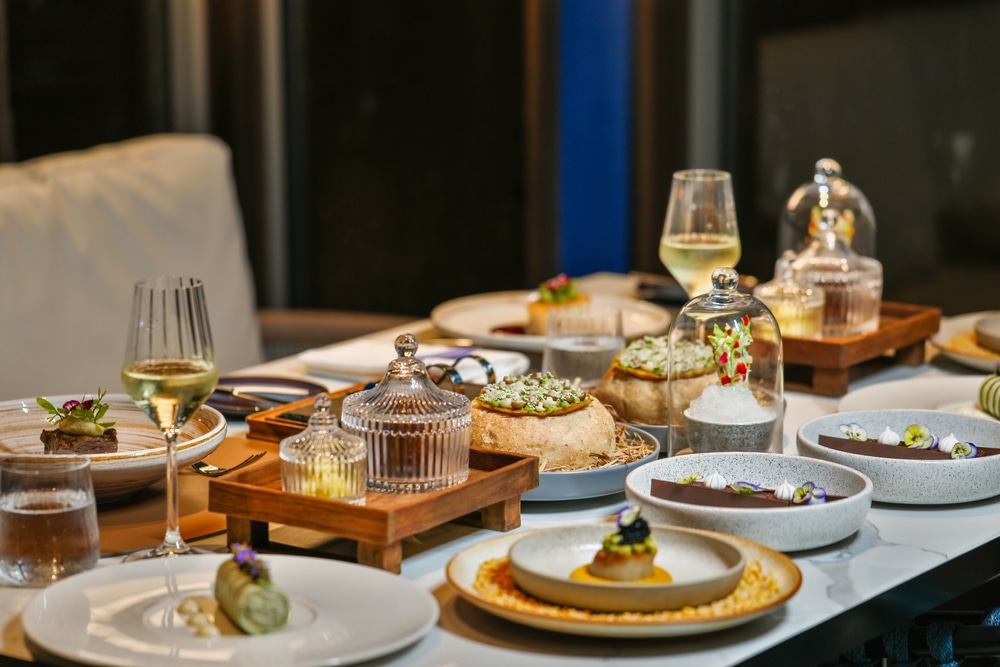Have you ever noticed how background music can change the feeling of a dining experience? Music playing in restaurants impacts customers in interesting psychological ways.
The music used affects visitors’ emotions, duration of stay, and even expenditure of funds. Our brains subconsciously process music. Upbeat songs with a fast tempo may quicken our pulse and breathing. This extra stimulation can make us feel happier and more excited.
Meanwhile, slow, quiet instrumental music promotes relaxation. It helps customers unwind and enjoy lingering longer in the restaurant. With so many dining options available today, establishments aim to choose music styles that prove most popular and profitable.
Understanding how sound sets the scene can help improve every customer’s experience.

Psychological Effects of Background Music on Dining Experiences
Here are some psychological effects of background music on dining experiences:
Mood Enhancement
Background music plays a crucial role in restaurant music solutions. How tunes are selected influences more than ambient noise – it sets the psychological scene for dining.
Music shaping mood proves especially important, as positive emotions lead patrons to linger and spend more. Upbeat songs may lift spirits, while relaxing instrumentals promote unwinding over meals.
Restaurant music solutions aim to please patrons through subconscious song selection.
Food Perception
More than just mood shapes how we dine. Background music also affects our perception of food itself. Subtle tunes impact taste before the first bite is taken.
Fast tempos have been shown to enhance crisp flavors, while slow jams allow deeper savoring of decadent fare. Carefully chosen music can make dishes more delicious through its cues to our brains.
Proving the power of sound, restaurants enhancing food enjoyment see top returns. Selection matters to more than just mood—it influences the entire dining experience.
Eating Pace
Restaurant music impacts patrons beyond mood or taste. Speed of dining proves another factor shaped by tunes. Upbeat tracks lead customers to quicker consumption and time spent.
Yet slower jams prolong experiences without rushing. With full tables turning over fast-paced by certain music, operators lose opportunities. However, relaxing melodies enhance revenue potential as diners linger longer.
Choosing wisely balances turnover needs with maximum profit potential through dining experience orchestration.
Social Interaction
Cafe background music plays a crucial role in customer connection. Loud or complex songs prove distracting to conversation over meals together. However, well-matched instrumentals create a relaxing environment, allowing natural discussion.
Evaluating these social effects helps cafes select sounds, enhancing patron bonding over food.
Choosing music that is not overpowering but complements talks represents an integral part of any cafe’s background music strategy, aiming to please through atmosphere appeal and return business from quality time shared.
Memory Recall
Music imprints on memory in surprising ways. Beyond setting immediate moods, tunes play a role in dining recollection. Patrons recall favorable experiences strengthened by soundtrack cues.
Songs trigger memories of quality time, food, or service long after meals. Operators can leverage this by carefully selecting upbeat melodies patrons will happily replay in mind.
Favorable remembrances lead back through doors, so discovering music facilitating fond flashbacks brings return customers. Operators improving recall through the right tunes see rewards beyond a single check.
Familiarity
Music chooses us as much as we choose it. Familiar strains trigger emotion and association beyond a restaurant’s walls.
Operators harnessing familiar favorites find patrons tapping their toes before spotting menus. The joy of known tunes boosts diners’ spirits instantly. Yet unfamiliar noise proves jarring, undermining the moods the venue aims to set.
Strategically including some familiar and new softens this effect, letting nostalgia and novelty harmonize. Operators understanding how recognition impacts experience can leverage familiarity to their tables’ delight.
Customer Satisfaction
Patron pleasure proves paramount for any establishment. Music’s subtle effects determine satisfaction or dissatisfaction in surprising ways.
Overlooked aspects like tempo, volume, and genre choice impact care beyond recognized factors. However, optimizing atmospheric details like tunes creates loyal patrons.
Customers feel heard and understood through specially considered service elements, leaving them happy. While sound operates beneath the surface, music is vital in crafting satisfying experiences, ensuring return business and word-of-mouth praise. Pleased customers represent the bottom line for diner operators.
Brand Image
Music provides identity beyond menu and décor alone. Carefully selected tunes shape recognition before customers ever set foot inside. Operators utilizing music to imprint promotional identity gain awareness through soundtrack spying.
Familiar refrains remind potential patrons of qualities suited to their preferences, drawing them through entrances. However, mismatched noise undermines branding goals by confusing messages.
Harmonizing music with overall brand objectives engages customers coherent with the image operators convey. Tunes offer opportunities to promote ethos for recall and return visits.
Dining Duration
For operators, more seat time means a greater chance of additional covers and check averages. Music proves a powerful behind-the-scenes lever for optimizing customer longevity.
Upbeat tempos encourage quicker service and spending. Yet, sure, instrumentals allow relaxation, lengthening the experience. Identifying compelling tunes allows balancing turnover needs with revenue-boosting lingers.
Prolonged stays boost per-person totals and future patronage as word spreads about a place to unwind. Music that conducts customers’ internal clocks helps venues maximize margins through visit duration.
Conclusion
Background music profoundly shapes the psychology of dining. When restaurants choose the right tunes, it enhances customers’ experiences and spending.
Music is a subtle persuader, so finding styles that most patrons enjoy enriches their time and the money they leave behind. Operators can experiment and analyze data to find their space’s perfect musical mix.
Harnessing these unconscious effects of sound creates lasting value for both business and client that lingers after the final song ends. Well-matched music makes for happy customers and full menus.